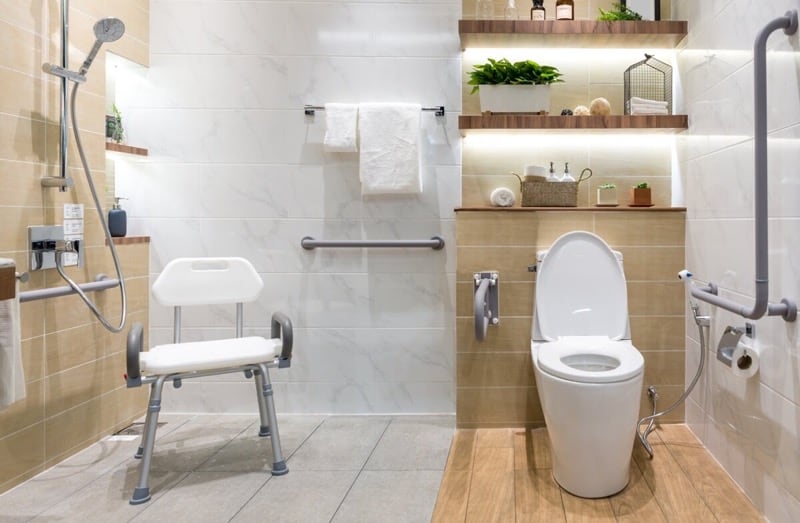While seniors can benefit from living in assisted living facilities, many prefer to age in place by staying in their own homes in their lifelong neighborhoods. In fact, more people are choosing to age in place than ever.
One major reason seniors choose to age in place is that they want to stay in their much-loved homes, surrounded by their familiar neighbors and family.
If you or a senior in your life is considering aging in place, here are six modifications and state-of-the-art assistive technologies to make the home more senior-friendly.

1. Adjustable Beds and Seats
Assistive technology is easy to implement and doesn’t require making permanent changes to your home, so it’s an excellent solution for seniors aging in place.
Some of the best adjustable bed bases and electric lifting seats can help you easily get in and out of your armchair and bed because they can slowly tilt you into a standing or sitting position. These devices can increase a senior’s independence and have health benefits, too.
Straining to get up from a sitting position can cause achy joints and muscles. The anxiety of trying to avoid a dangerous fall can take a physical and mental toll when you’re not as mobile as you used to be. Investing in assistive devices like adjustable beds and lifting seats can help you stay comfortable.
2. Smart Home Devices
Google Home and Amazon Echo are voice-controlled virtual assistants, making them excellent for users who need assistance accessing media, ordering groceries, calling friends, automating lighting, or reminders for medications and appointments.
Smart doorbells can also connect to Alexa and have a variety of convenient functions – such as video monitoring and two-way communication. Because smart devices connect to an app on a smartphone, they are also easy to set up.
There are also high-tech personal monitoring devices available on the market. Personal monitoring devices can track how much sleep you’re getting, your water intake, and your activity level.
3. Modifying the Shower and Bathtub
Seniors who decide to age in place and homeowners who want to make their homes more senior-friendly should consider making modifications in the bathroom – especially the bathtub.
Replacing a bathtub with a walk-in shower is a practical solution that will increase safety and reduce the risk of slipping and falling. Another option is to replace the bathtub with a walk-in bathtub; however, there are also a few more affordable options.
One essential modification to prevent slips and falls is to install safety strips or a safety bar on the side of the bathtub. These modifications are easy to install and can improve bathing safety dramatically. Other inexpensive options are to buy a bathtub transfer bench to allow seniors to get in and out of the bathtub easily or purchase a bathtub chair.
4. Modifying the Kitchen
Seniors who are aging in place may find that their countertops and appliances have become too high or are not in the optimal position – especially if they rely on a wheelchair to get around.
A professional contractor can adjust the sink and countertop height to allow them to be reached from a seated position. Additionally, placing the microwave on a microwave stand instead of leaving it in a raised microwave cabinet or at the back of the counter can make it much easier to access.
5. Widening Doorways
For seniors who need mobility aids like wheelchairs or walkers, widening doorways is a must.
The costs to widen doorways in the home vary depending on the placement of electrical switches, outlets, and the type of insulation used in the home.
6. Installing Ramps
Seniors who have problems with their balance or are unsteady on their feet may find climbing up and down exterior stairs to be a challenge.
Installing ramps is not only necessary for comfortable aging in place; it is also one of the best ways to increase a senior’s independence – even though it can be costly. Professional contractors will know how to build and install ramps with the optimal height and rise.
For seniors who rely on wheelchairs to get around, indoor threshold ramps are also necessary. Indoor ramps make it safer to travel through the home by providing a smooth transition from one surface to another.
Usually, threshold ramps are made from rubber – making them easy to adjust to accommodate the heights of door jambs or steps. For a non-permanent solution, there are also mobile ramps that you can install yourself. Another simple solution to increase safety is to add traction tape to elevated walking surfaces and stairs.
